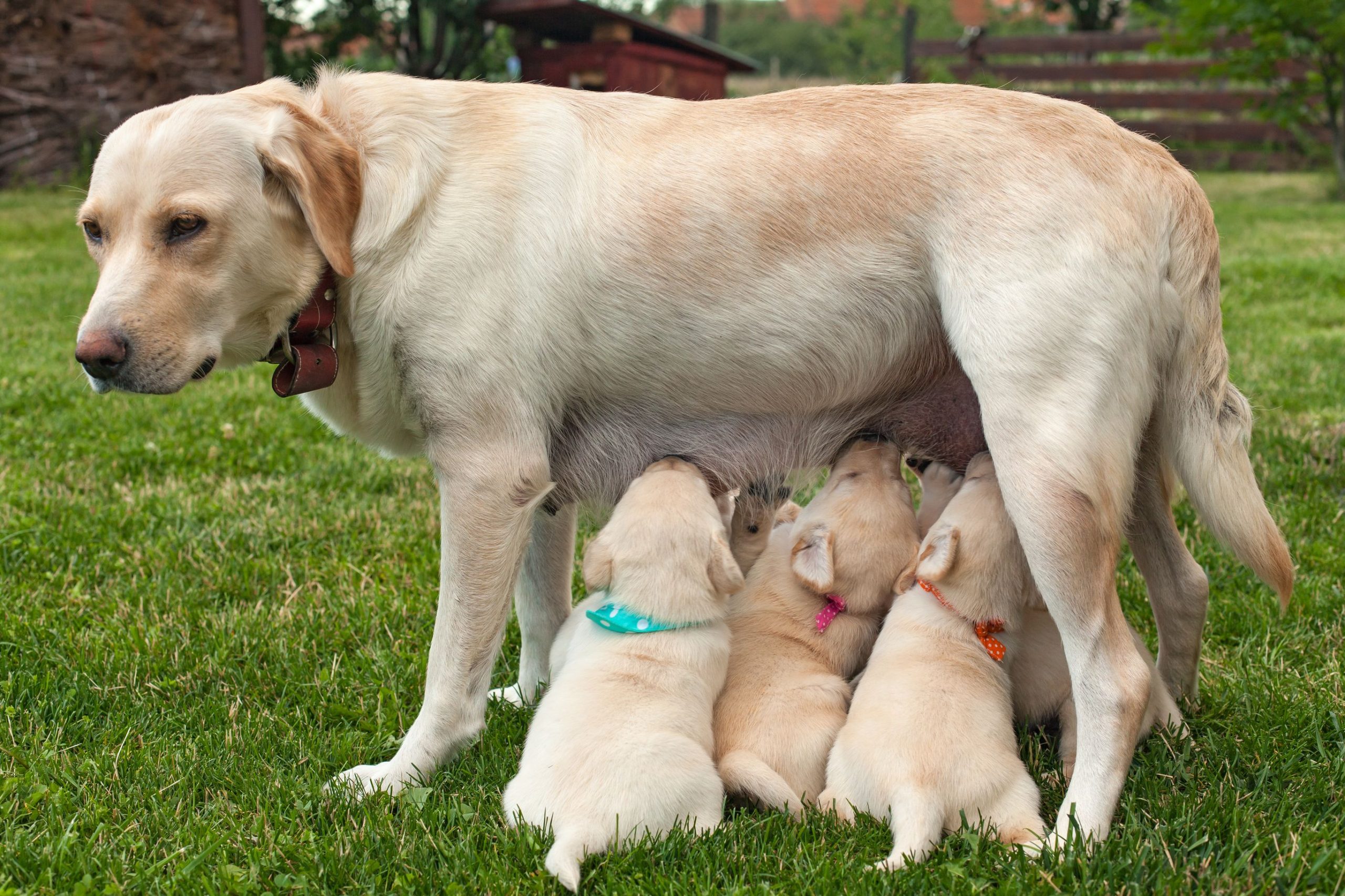Puppy Nutrition: What you need to Know

Puppy Nutrition
Oxford defines nutrition as “the process of providing or obtaining the food necessary for health and growth.” As a dog breeder, I divide puppy nutrition into phases (gestation, milk-only, weaning, and post-weaning). During each phase, a puppy has different nutritional needs and/or nutrition methods.
GESTATION
It might go without saying, but it’s important that a female is in tip-top shape before you breed her. I feed all my adult dogs Purina Pro Plan Sport 30/20. This is their diet year-round. With 30% protein and 20% fat, it provides my dogs with great nutrients, whether training, hunting, growing puppies, or simply enjoying the weather.
Once a female starts her heat cycle, I start giving her prenatal vitamins. I add these vitamins to her diet because they provide vitamins, minerals and micronutrients that help support her health prior to breeding and throughout pregnancy, nursing and weaning. The vitamins contain folic acid, iron, zinc and DHA that help support the development and function of the puppy’s brain, central nervous tissue and vision.
About 40 days into a female’s gestation period, I start transitioning her to a puppy feed. Feeding pregnant and nursing dogs puppy food helps support their nutritional needs during and after pregnancy. A pregnant dog needs more calories, but she has less space to consume them. The concentration of micronutrients in puppy food helps her get what she needs while having less space in her abdomen to consume food. Not only are these nutrients good for the female, but she’s passing them on to her growing puppies and on into her milk production.
About 10 days before a female whelps her puppies, I worm her. Not only is making sure she’s dewormed allowing me to ensure her diet isn’t being invaded by worms, it also safeguards the puppies from the pests that could attach to their digestive system and raid their diet.
MILK-ONLY
From the time a puppy is born until it is roughly three weeks old, it relies exclusively on its mother’s milk for its dietary needs. During this phase of a puppy’s life, it is critical to meet the mother’s nutritional needs as well as ensure her digestive system stays worm-free and healthy. As a result, we continue to give her daily prenatal vitamins and we worm her and the puppies again two weeks after they are born.
WEANING
When the pups reach three to four weeks old, we begin the weaning process. We start the process by feeding them puppy mush (soft puppy food mixed with a puppy milk replacer) two times a day (morning and evening). We add probiotic powder to the puppy’s mush. This helps them have healthy gut health, especially during their dietary changes. During this time, they still have full access to their mom, but she starts nursing them less and less.
Once the pups are five to six weeks old, we float their food with water. Mixing it with water helps ensure they are drinking water, plus it helps them slow their eating down. They are nursing very little now and by week six, our pups are completely weaned.
POST-WEANING
During this phase, we worm them one more time at eight weeks old and we encourage their new homes to continue their veterinarian’s recommended worming plan.
We also recommend that the pup’s new family follows dog food’s feeding recommendations (found on the back of the bag) as a guide, not a rule. Their pup might need a little more or less food depending on their growth. Pups will almost always act hungry and typically eat anything you put in front of them. That doesn’t mean they need more food. Overfeeding a pup can be damaging to its overall development. We recommend that buyers feed their dog puppy food until they are 12-16 months old. This helps ensure that they’re receiving the proper nutrients they need as they develop.
IF YOU EVER have dietary questions for your puppy, I recommend you reach out to the breeder you purchased them from. They more than likely will be able to answer your questions. If they can’t, they’ll likely lead you to reach out to your veterinarian. Enjoy watching your pup change daily as they develop.
By Kyle Dana


